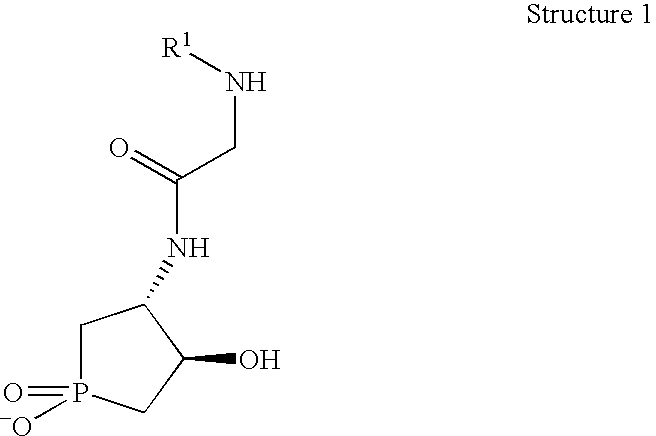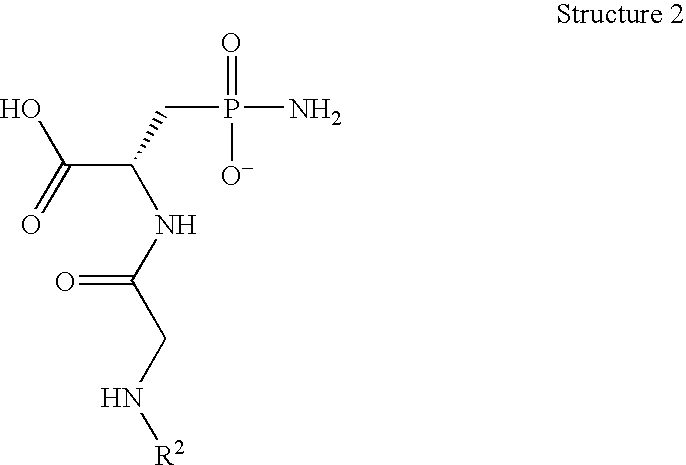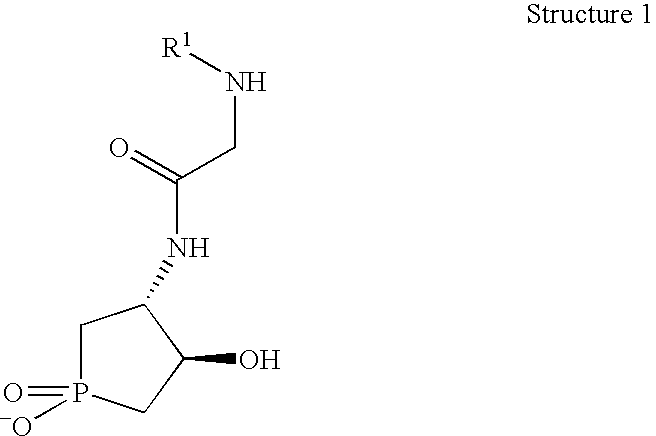Asparagine deaminase catalytic antibodies
a technology of asparagine deaminase and catalytic antibodies, which is applied in the field of catalytic antibodies, can solve the problems of significant adverse immune reactions in patients
- Summary
- Abstract
- Description
- Claims
- Application Information
AI Technical Summary
Benefits of technology
Problems solved by technology
Method used
Image
Examples
example 1
Synthesis of 2-(acetylamino)-N-(1,4-dihydroxy-1-oxophospolan-3-yl)acetamide
[0089]
[0090] A thick walled glass tube (120 ml capacity) equipped with PCl3 (17.5 ml, 27.5 g, 0.2 mol), P(OCH2CH2Cl)3 (20.3 ml, 27.0 g, 0.10 mol), 2,6-di-tert-butyl-p-cres (0.22 g, 0.001 mol) and liquid butadiene (condensed from gaseous C4H6 at −70° C.; 27 ml, 17 g, 0.32 mol). The glass tube is then sealed with a screw cap and heated to 105° C. using an oil bath. After 19 h, the tube is removed from the oil bath and allowed to cool to room temperature. Filtration of the cloudy yellow solution affords a mixture of 1,2-dichloroethane and the desired 1-chlorophospholen-1-one.
[0091] To a rapid stirred solution of PhCH2OH (4.6 ml, 44.3 mmol) in Et3N (20 ml) and CH2Cl2 (45 ml) at 0° C. is added a portion of the crude 1-chlorophospholen-1-one / 1,2-dichloroethane mixture (40 mmol) drop wise slowly via syringe. The resulting suspension is stirred for 12 h at room temperature, concentrated under vacuum, and the resul...
example 2
Synthesis of N-glycinyl-L-phosphonamidylalanine
[0097]
[0098] Thionyl chloride (15 mL) was added to the suspension of the D,L-(2-amino-3 phosphono)propionic aid (5 g, 2.96 mmol) in benzyl alcohol (190 mL). The rate of the addition was such to maintain the internal reaction temperature at or below 12° C. (ice / water bath). After the addition was completed, the mixture was allowed to warm-up to room temperature and stirred overnight. The mixture was then concentrated in vacuo (rotoevaporator, bath temp. 90° C.). The thick, white syrup was dispersed in diethyl ether (100 mL). The resulting white solid was collected on a filter, washed with minimal amount of water (10-20 mL) and ether (2×20 mL). The white, soft solid was dried under vacuum in a desiccator for 16 hrs. The yield was 7.1 g (92%).
[0099] Pure Cbz-Gly-Cl was synthesized using a modified version of literature procedures. Grum-Grzimailo, M. A.; Volkova, L. V.; Serebrennikova, G. A.; Prebrazhenskii, N. A. Zh. Org. Khim. 1967, 3(...
PUM
| Property | Measurement | Unit |
|---|---|---|
| temperature | aaaaa | aaaaa |
| temperature | aaaaa | aaaaa |
| circulating concentration | aaaaa | aaaaa |
Abstract
Description
Claims
Application Information
 Login to View More
Login to View More - R&D
- Intellectual Property
- Life Sciences
- Materials
- Tech Scout
- Unparalleled Data Quality
- Higher Quality Content
- 60% Fewer Hallucinations
Browse by: Latest US Patents, China's latest patents, Technical Efficacy Thesaurus, Application Domain, Technology Topic, Popular Technical Reports.
© 2025 PatSnap. All rights reserved.Legal|Privacy policy|Modern Slavery Act Transparency Statement|Sitemap|About US| Contact US: help@patsnap.com



